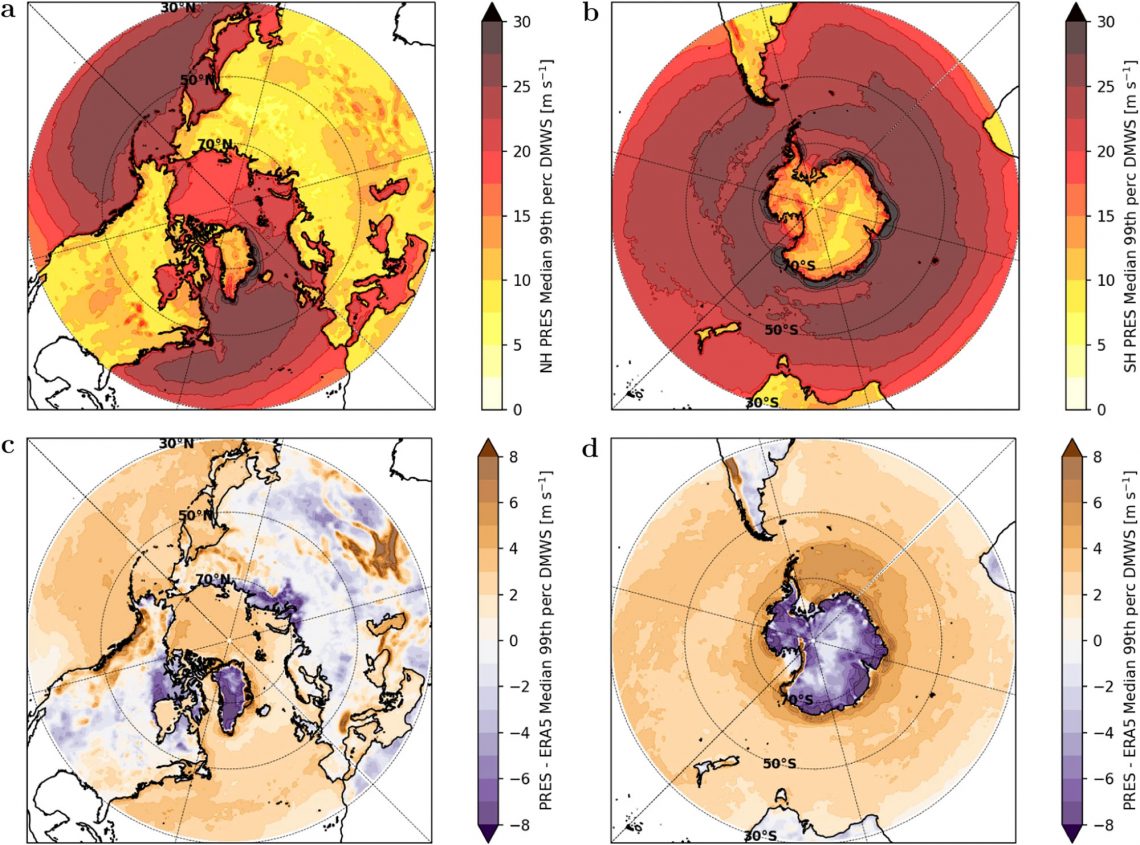April 29th, 2024
Key Findings
- This study investigated the global impact of midlatitude cyclones on extreme wind speed events, in both hemispheres, under a warmer climate.
- Extreme near-surface wind speeds increased by up to 3% towards the poles and decreased by a similar amount in the lower midlatitudes.
- Despite a decrease of roughly 4% in the total number of midlatitude cyclones, the proportion of cyclone-associated extreme wind speed events in a warmer climate increased by 10%.
- The attribution of extreme wind speed events to midlatitude cyclones demonstrates that the poleward shift of cyclone tracks and intensity results in a poleward migration of cyclone-associated extreme wind speeds in both hemispheres.
- Northwestern Europe, the British Isles, and the West Coast of North America are identified as hotspots, with the greatest socio-economic impacts from increased midlatitude cyclone-related extreme winds.
Emanuele Silvio Gentile, Ming Zhao, Kevin Hodges. npj Climate and Atmospheric Science. DOI: 10.1038/s41612-023-00540-x
Given the significant risks posed by near-surface extreme wind speeds associated with midlatitude cyclones to lives, livelihoods, and infrastructure, it is imperative to understand their physical changes, including magnitudes and patterns, under human-induced global climate change. This study used GFDL’s high-resolution (50 km grid-spacing) atmospheric climate model, AM4, to investigate the global impact of midlatitude cyclones on extreme wind speed events, in both hemispheres, under a warmer climate. The authors conducted simulations covering the period 1949–2019 for both the present-day climate and an idealised future global warming climate scenario with a sea surface temperature (SST) increase of 2 K.
Their findings reveal that extreme near-surface wind speeds increase by up to 3% towards the poles while decreasing by a similar amount in the lower midlatitudes. When considering only extreme wind speed events attributed to midlatitude cyclones, the authors found a migration by the same amount towards higher latitudes, both in percentage per degree of SST warming and in absolute value.
The total number of midlatitude cyclones decreased by roughly 4%, but the proportion of cyclone-associated extreme wind speed events increased by 10% in a warmer climate. Finally, Northwestern Europe, the British Isles, and the West Coast of North America are identified as hotspots, with the greatest socio-economic impacts from increased cyclone-associated extreme winds.



